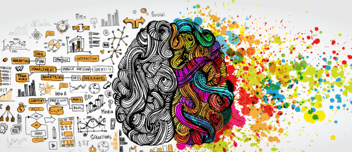Unconscious bias is, as the name suggests, unconscious. It’s a bias that we are unaware of and happens outside of our control. It occurs automatically and is triggered by our brain making a quick judgement and assessment of people and situations, influenced by our background, experiences and environmental conditions.
What we call unconscious biases are rooted in the human brain’s automatic processing systems. This unconscious decision making has played an important role in the survival and evolution of our species, without which our ancestors would have ended up as fodder for wild animals. The same ability now gets us through our day when we have to deal with multitasking, deadlines, flooded emails and more. Google even put this in numbers in their presentation on unconscious bias: “We (humans) receive 11 million bits of information every moment. We can only consciously process 40 bits.” That’s 99.996% unconscious.
Unconscious biases can affect workplaces and organizations. It can introduce unintentional discrimination and result in poor decision making. Even a tiny bit of bias can have big consequences. The impact of little decisions can accumulate over time.
COMMON TYPES OF BIAS
- Affinity bias: the tendency to warm up to people like ourselves.
- Halo effect: the tendency to think everything about a person is good because you like that person.
- Perception bias: the tendency to form stereotypes and assumptions about certain groups that make it impossible to make an objective judgment about
members of those groups. - Social comparison bias: the tendency, when making hiring decisions, to favor
potential candidates who don’t compete with one’s own particular strengths. - Bias blind spot: the tendency to see oneself as less biased than other people, or to be able to identify more cognitive biases in others than in oneself.
You can’t prevent unconscious bias from happening, so stop trying to. It’s a war on evolution and the chances of winning are non-existent. So what can you do about it? Once it happens :
- Identify it
- 2. Acknowledge your biases
- Be intentional about putting biases aside when making decisions
- Call others out on their biases Everyone has biases; it’s part of being human.
From an organizational perspective, the sooner we realize this reality—and take proactive steps to overcome the biases that hold us back—the stronger our companies become, and the better positioned we’ll all be to serve our customers effectively.




